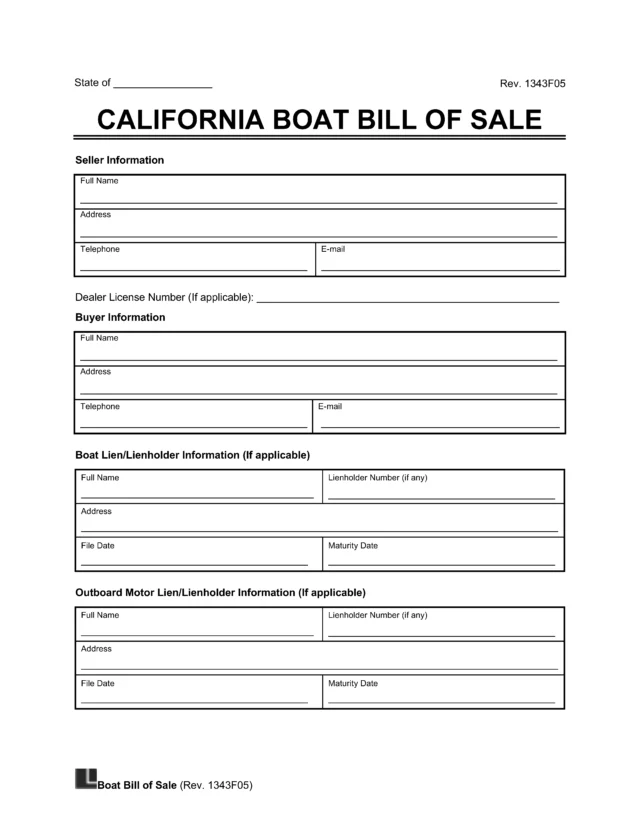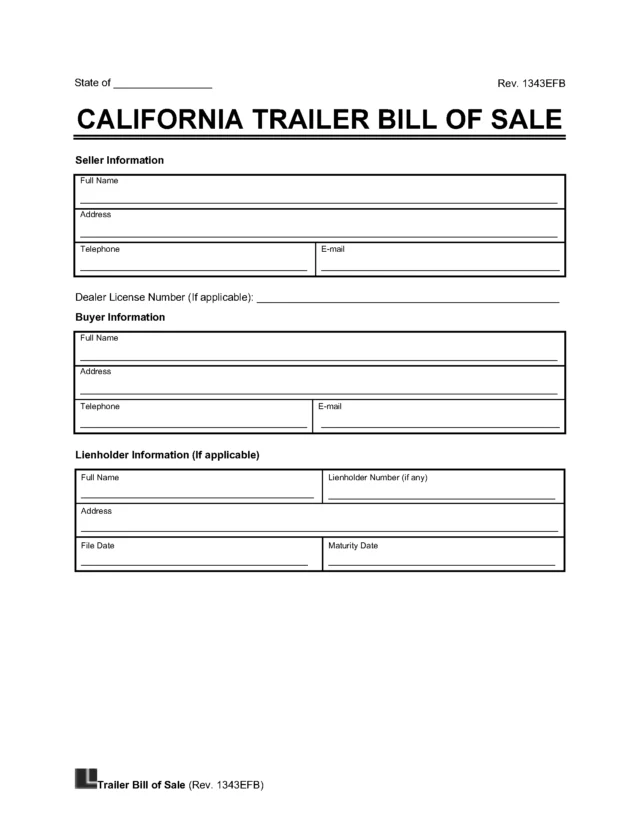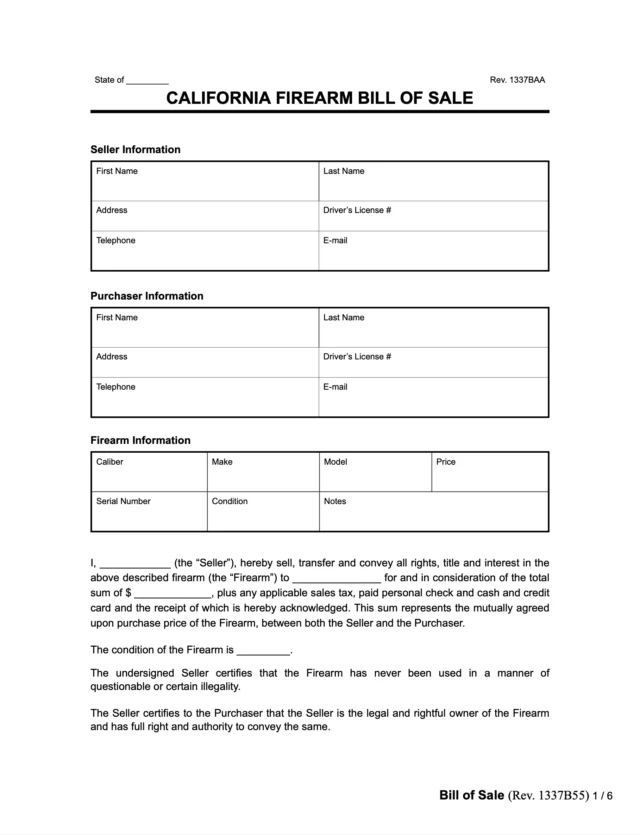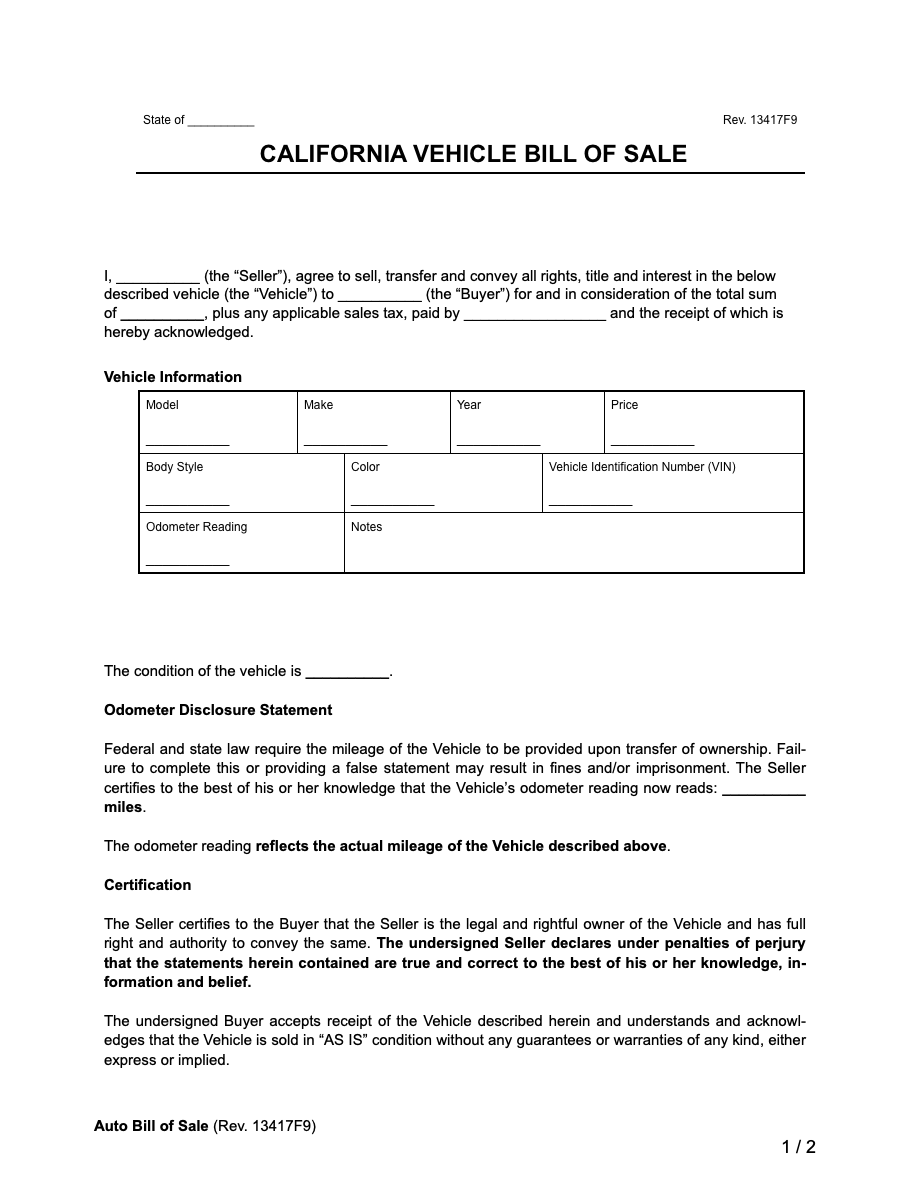What is a California Vehicle Bill of Sale?
A California vehicle bill of sale is a legal document that records the private sale or transfer of a car from one person to another. It includes basic information about the buyer, the seller, and the vehicle. This document can be especially helpful because it serves as:
- Proof of a private sale
- Confirmation of ownership transfer
- Legal protection if there are future disagreements about the sale
In California, the Department of Motor Vehicles (DMV)encourages sellers to complete a bill of sale. This document can be especially helpful if the vehicle title is missing or not properly signed. It can also support your application when transferring or registering a vehicle in California.
Is a Vehicle Bill of Sale Required in California?
A vehicle bill of sale is not required in California, but strongly recommended, especially for private vehicle sales. You may need a bill of sale in situations when:
- Selling a vehicle without a properly signed title
- Gifting a car to a family member or friend
- Changing ownership when the vehicle has more than one owner
- Completing a private car sale
In all these cases, a California vehicle bill of sale helps confirm who legally owns the car and when the sale occurred. Proper documentation can help you avoid legal and registration issues later.
Registering a Vehicle in California
If you’re registering a vehicle with the California DMV, you may also need the REG 343 form (Application for Title) and a smog certificate if the car is over four years old. The bill of sale (REG 135 form) helps prove ownership, especially if the title is missing or incomplete.
Does a Vehicle Bill of Sale Need to Be Notarized in California?
No, a vehicle bill of sale does not need to be notarized for most private vehicle sales in California. However, both the buyer and the seller must sign the bill of sale to make it valid.
While not legally required, notarizing the vehicle bill of sale can offer added protection, especially for high-value transactions. It can also help you avoid disputes over ownership in the future.
According to the California DMV, if a vehicle has been sold multiple times within a short period without the title being updated for each sale, a bill of sale can help document those sales without needing signatures from all previous buyers.
Sample California Vehicle Bill of Sale
View our California vehicle bill of sale example below to see how to complete each section accurately. Use our step-by-step form to fill out your details and then download your vehicle bill of sale in PDF or Word format.







